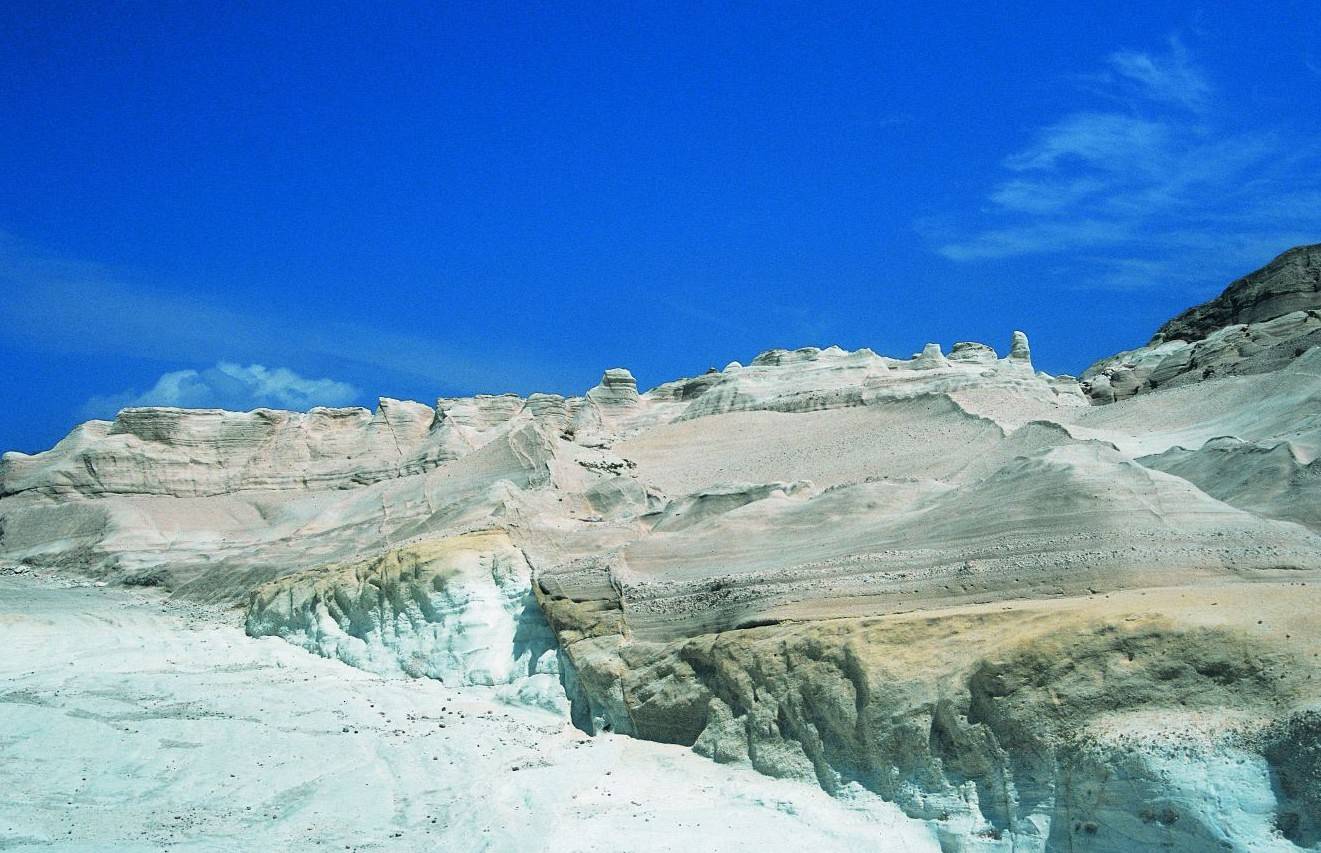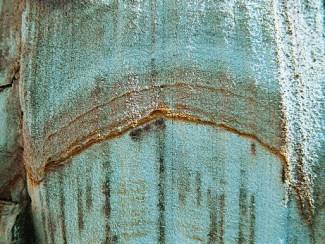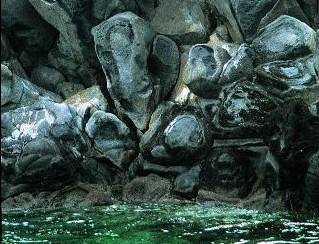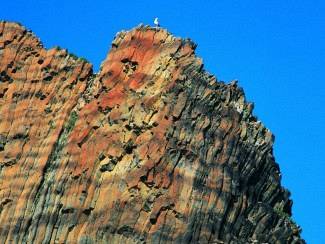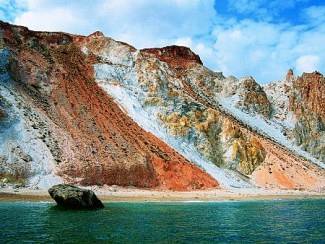Milos literally rose out of the Aegean Sea in the midst of earthquakes, tsunamis and submarine volcanic eruptions. All these natural phenomena occurred in the course of geological eons as a result of the collision and submersion of the African beneath the Euroasian continental plate (or Aegean plate). Approx. 3.5 to 2.7 million years ago, due to the collision of the aforementioned continental plates, a centre of volcanism was created in the Aegean (the volcanic arch that starts at Methana-Poros, continues to Milos and Santorini and concludes in Kos and Nisyros). At the same, occurred the first, massive volcanic eruption, the centre of which was probably to the north of Milos, followed by a sequence of eruptions.
As an island of volcanic origin, Milos has a very distinctive geology, meaning that the rocks and minerals its soil and subsoil are made of point directly to its special creation. Some rocks and minerals of the island are very characteristic and owe their origin to volcanic processes:
- Gases blasted through molten rocks form a lava froth. When this froth cools very quickly, containing myriads of gas bubbles, it forms pumice. In Milos, the pumice layers were not flattened, while still hot, by the weight of overlaying rocks to be compressed into dense rock, but remained very soft for thousands of years. It is the pumice ash that Miloans have been using to create rock-cut shelters (storage areas, garages etc.), the well-known «syrmata», in various sites, like Adamas, Klima, Mantrakia etc. Even the famous underground catacombs in Trypiti have been dug in this soft pumice ash.
- The result of very quick cooling of lava, so that crystals do not have the time to be formed, was obsidian. Rock crystals are the product of gradual cooling of molten rocks, therefore obsidian is an amorphous volcanic glass. This particular property of obsidian makes it break into curved fracture planes, turning it into an ideal raw material for the making of tools and weapons with very sharp cutting edges. The black, shiny obsidian of Milos was the main reason for the development of prehistoric trade (Stone and Bronze Ages) in the Aegean, the metropolis of which was Phylakopi, and main extracting sites (quarries) Nychia and Demenegaki.
- Perlite is a submarine lava cooled abruptly on the sea floor and containing large amounts of trapped water. The minerals’ main property of expanding its mass when heated is due particularly to this fact, i.e. the evaporation of the trapped water. There are two perlite deposits on Milos, dating to two distinctive geological periods. The older deposit is called the Halepa perlite (from Mavra Gremna to Hivadolimni and Agia Marina, see Route 1) and, since it is far less glassy than the other perlite deposits of the island, it has different swelling properties. The younger Milos perlite deposits were the result of the submarine volcanoes of Fyriplaka to the South, and Trahilas to the North. They are chemically unique, different from other Greek perlites and of superior quality to the perlite at Halepa, due to their highly glassy structure and large water amounts, that make them particularly light when expanded.
- The clay minerals bentonite and kaolinite tell us whether the volcanic fluids were alkaline or acid: bentonite on Milos was formed by the leaching of porous, fragmentary rocks by seawater mixed with hot volcanic, alkaline waters. When the same porous rocks were also leached by hot, acid fluids, a blanket of kaolinite was deposited on the earlier bentonite. The bentonite of Milos is of very high quality. Three distinct groups of bentonite occur on Milos with slightly different properties: the deposits of Zoulias- Aspro Horio-Tsantili, the largest deposit of Angeria and Koufi, and finally the deposits of Ano and Kato Komia, Rema and Mavrogiannos. Greece is the 2nd largest producer of bentonite after USA. Most of Greece’s production comes from Milos.
- Volcanic activity on Milos produced hot underwater volcanic fluids, rich in metals that found their way to the surface through fractures. The cooling of these fluids as they were moving up towards the surface resulted in deposits of metals along their way. This is best seen in the old manganese mines at Cape Vani, to the North Western part of Milos.
- Barite has a similar origin in Milos: as the hot, metal-rich fluid moved up the open fractures, it met cold, sinking seawater. This mixing resulted in the precipitation of barium sulphate (barite) in the fractures. Such deposits can be seen along old fractures at Triades and Komia in the Voudia area, and in former times, were mined for barite.
- The Milos Sulphur Mine at Paliorema, on the south coast of the island, was one place where there was a downward streaming of extremely acid warm water. A natural passage of about 70 m. in diameter was used by hot waters, which ascended, and leached almost everything out of the original volcanic rocks. The same passage was used for the descent of warm waters, rich in sulphuric acid, filling the cavities and pores with yellow native sulphur. Paliorema still smells of sluphuric acid.
